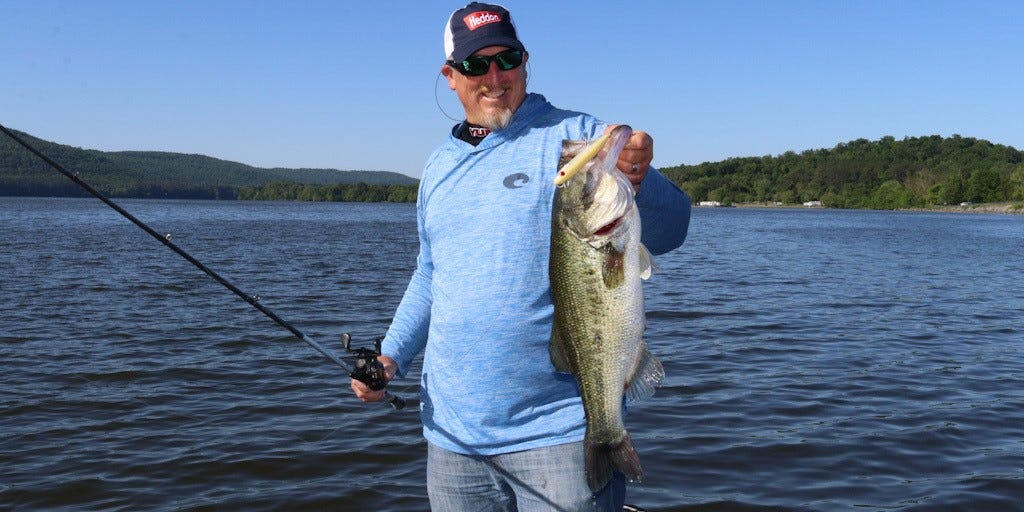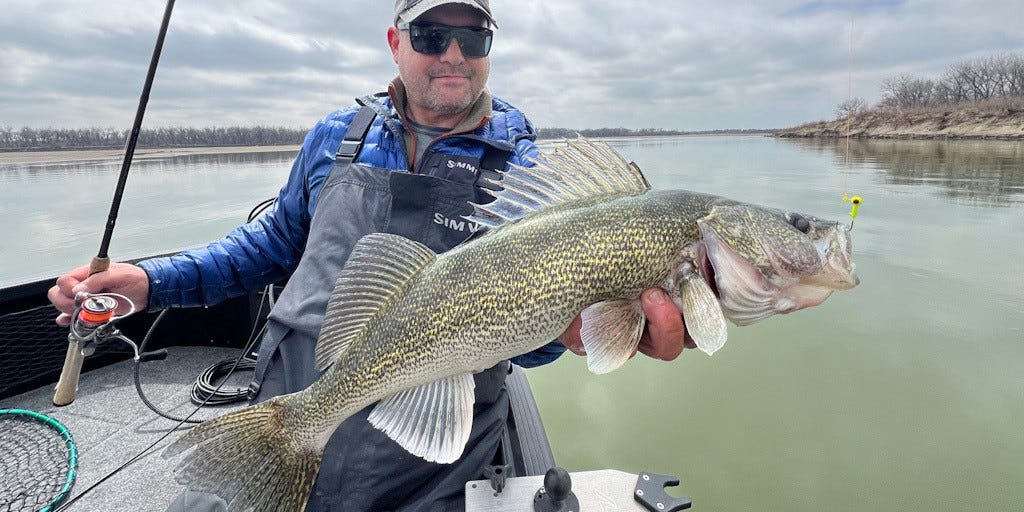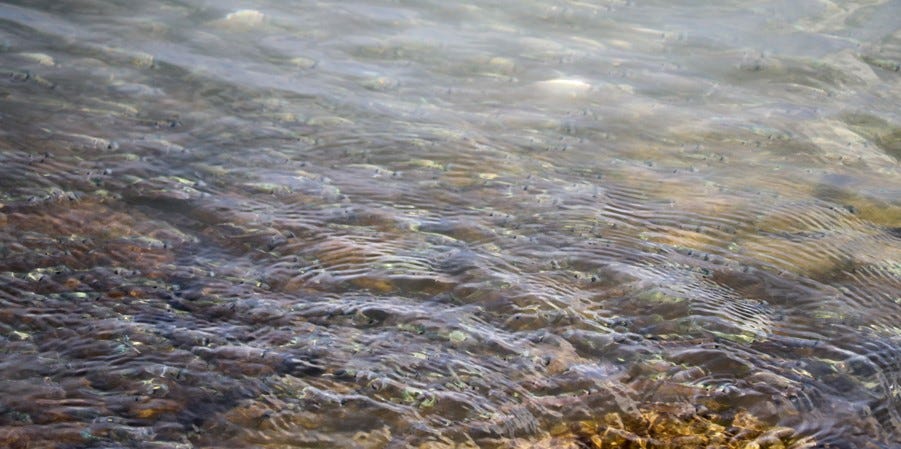- Feb 20, 2013
Up-North Jerkbait Tips
Slender, minnow-imitating stickbaits work wonders for a variety of freshwater gamefish. From bass to pike and walleyes, few predators can resist the tantalizing twitch, pause and rolling action of a well-presented minnowbait. Of course, as with any technique, a few tricks of the trade can mean the difference between catching two fish and 20 on any given outing. Following are three hot patterns to put more fish in your boat.
A lifetime of plying the hallowed waters of northern Wisconsin and Minnesota has taught decorated multispecies guide Bill Rosner a thing or two about stickbait strategies. One of his pet patterns is an early season trolling program for targeting northern pike in shallow water.
“It’s one of the deadliest methods around for taking pike anytime from the early post-spawn period until shallow, rooted vegetation reaches the surface, “ he explains. “I focus on large, shallow bays with sand or soft bottom where spring pike feed aggressively, particularly in the afternoons when water temperatures often warm up as much as six degrees during the day.”
Hungry after a long winter under the ice, coupled with the rigors of the spawn, pike of all sizes are drawn to these fast-warming shallows where the food chain kicks into high gear faster than the main lake.
“My best bays run from 40 to 100 acres,” he notes. “And with wolfpacks of pike scattered here and there across such large areas, trolling is the most efficient way to fish.”
Rosner’s go-to setup is a sturdy 7-foot, medium- to medium-heavy trolling rod spooled with 10- to 14-pound mono or copolymer such as Silver Thread AN40.
“Superbraids have their place, but not here because the thin diameter allows baits to run too deep. In most cases, the maximum depth I’m fishing is 6 feet,” he said.
To limit bite-offs from his toothsome quarry, he adds a 6- to 10-inch leader, either hand-tied from bite-resistant fluorocarbon or of the store-bought steel variety.
A rattling stickbait lies at the heart of the presentation. After countless hours of experimentation, Rosner favors Smithwick’s Floating Rattlin’ Rogue. Hey says that both sizes, 3 1/2- and 4 1/2-inch, offer the right combination of rolling, side-to-side action, running depth and bait profile. Some days pike prefer the larger option, while other days they want the smaller bait. Color selection is straightforward, hinging on bright patterns on sunny days, and darker shades in overcast conditions.
With three anglers in the boat, Rosner runs a line off each side and a third in the propwash directly astern.
“I stagger letbacks from 30 feet on the center line out to 70 feet or so on the side, to vary running depth,” he said.
Trolling at speeds of 2.5 to 3.5 mph, he cuts zigzag- and figure-eight patterns across the bay, frequently zeroing in on potential hot zones including cabbage beds, rock shelves, troughs and points.
On the walleye front, Rosner says three-way rigging is a top option for delivering stickbaits in current.
“I’ve had fantastic trips pulling Rogues behind three-ways in the Rainy River,” he said with a grin.
While the Rainy lies along the Minnesota and Ontario border, the tactic holds water elsewhere in rivers large and small, and is also a killer on saugers and saugeyes in systems where these species are present. It’s a great way to deliver baits to fish holding in precise areas such as isolated pockets of fish-attracting structure, current seams and at key depths on channel edges.
At its core, Rosner’s rigging routine relies on a 10-pound mainline, three-way swivel, 2-ounce bell sinker on a 2-foot dropper, and 4- to 5-foot trailing line tipped with a 3½-inch Floating Walleye Rattlin’ Rogue.
“Rainy River Minnow is my favorite color, but it pays to experiment with other patterns, too,” he says.
The presentation is simple: Slow-troll either with or against the current, gently raising and lowering the sinker 4 to 6 inches off bottom. A lot of times, strikes come when you raise the weight, so Rosner suggests bracing yourself.
Stickbaits need no introduction to most bass fishing fans. But here, too, more than a few hot patterns slip under the radar of the masses. Rosner’s a fan of casting minnowbaits to smallmouths in rivers and along Chunky bronzebacks are suckers for slender baits twitched on the surface and cranked close to cover and structure.
Another top bassin’ option is twitching-and-pausing suspending stickbaits for postspawn largemouths as the fish begin migrating away from spawning grounds. My personal best northern largemouth, a broad-shouldered beauty topping 6 pounds, engulfed a slow-rolling stickbait over a large, fast-growing weed flat that tapered from a few feet of water at the spawning beds to more than 14 feet before dropping into the abyss.
For fairly aggressive fish, try a steady retrieve interspersed with pauses and 2- to 3-foot rodtip sweeps. However, when a passing cold front puts bass in a funk, nothing trips their trigger like a suspending stickbait. Cast it out, reel down and let it hang there motionless, then twitch or dart the lure slightly and pause again. Have fun with this technique, varying the length of pauses and intensity of twitches until the bass let you know what they want. One of my favorite baits for this pattern is a 4½-inch Smithwick Suspending Rattlin’ Rogue, which thanks to its near-neutral buoyancy has more patience that I do when it comes to hanging around waiting for a strike.
These stickbait patterns are just a sample of the countless ways to present these versatile, deadly lures to predators of all stripes. Each tactic can be easily adapted to target other species. Rosner’s pike trolling system, for example, can be quickly modified for tackling shallow-water walleyes at night. In a similar vein, with a little tweaking, his three-way stickbait rigs also shine on still-water structure such as steep drop-offs in classic, clear-water walleye lakes. In the end, their applications are limited only by your imagination.



